Road to Swakopmund
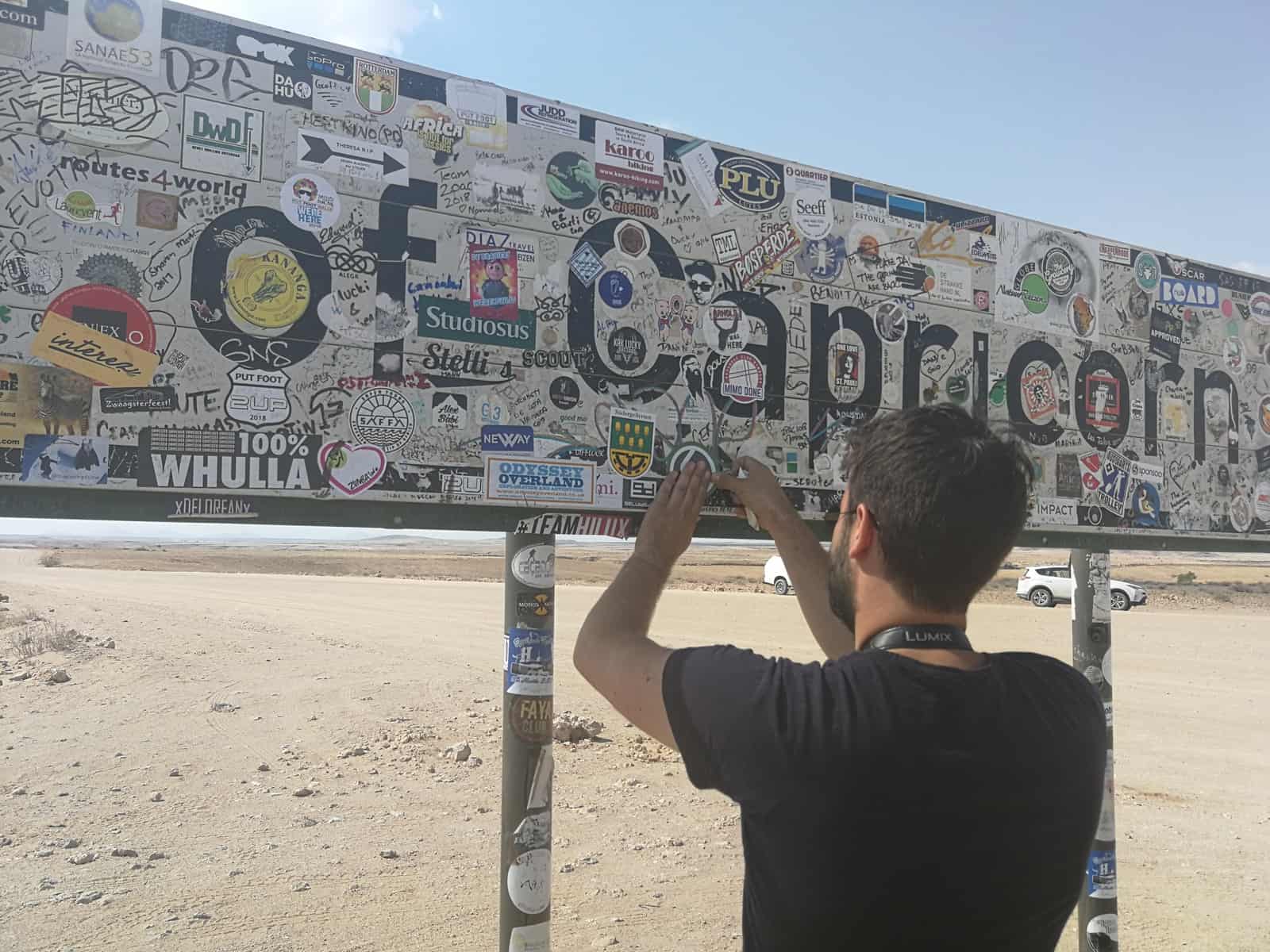
The road from Sossusvlei to Swakopmund crosses some really bizarre landscapes. We discovered our first zebras, and got into a sand storm just before reaching Swakopmund. The last 250km of the pad to Swakopmund just go straight through the stone desert. A good portion of the road is in an “adventurous” condition. We were happy to have a four-wheel drive! At least, the Namibian government is currently refurbishing the road, and they already finished the last 70km.

German Altstadt in Swakopmund
Swakopmund is soften considered to be the “most German” Namibian city. We were already used to a good amount of German-ness from Lüderitz and Kolmanskop, but Swakopmund easily topped it.
We stayed at Hotel a la Mer, which offers nice and clean rooms, an amazing rooftop view of the ocean, free wi-fi and German tv at the bar area.
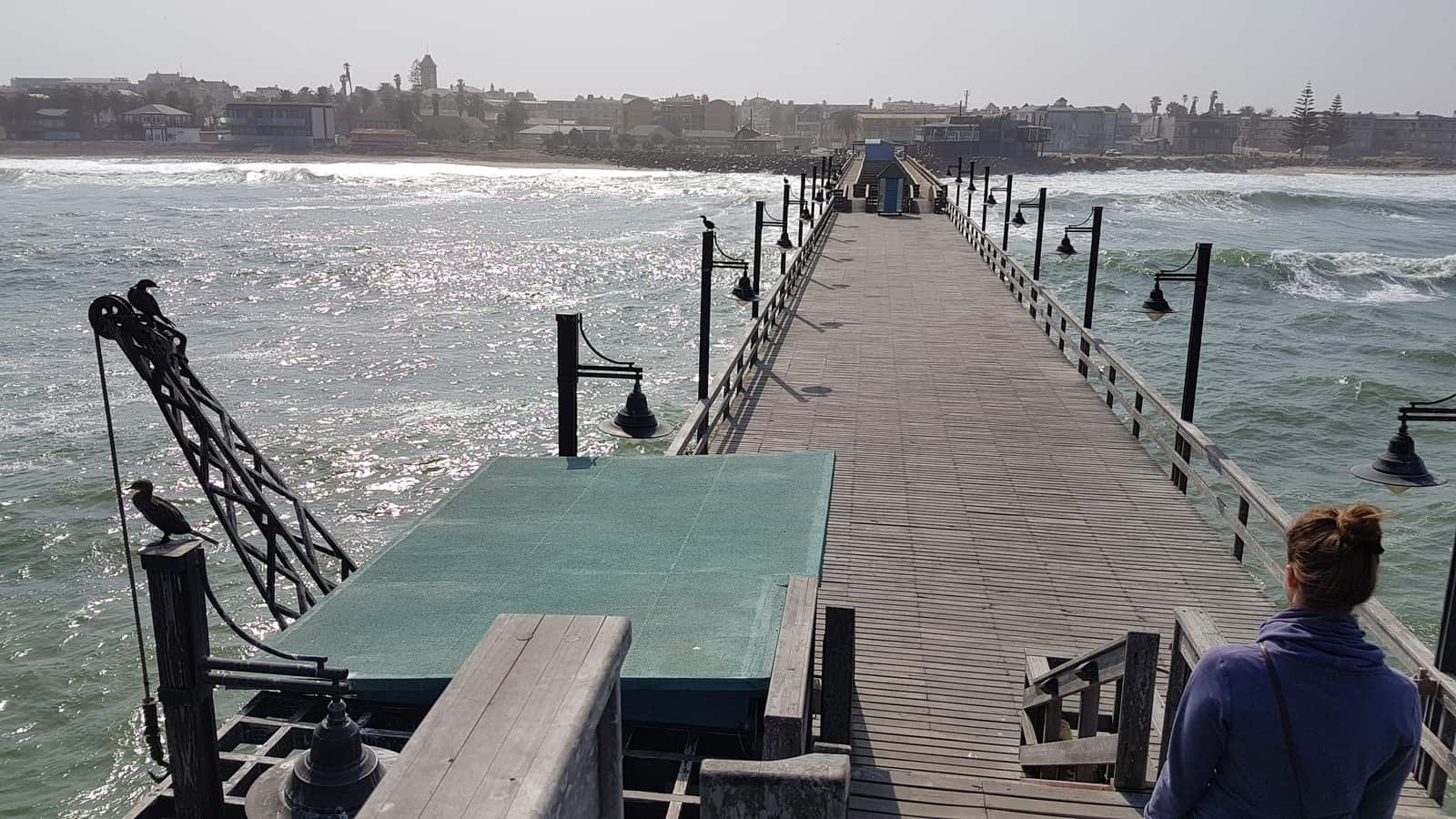
The main tourist destination for dinner is Kücki’s Pub. You can have German dishes like Eisbein and Sauerkraut, drink local beer (brewed by the German Reinheitsgebot), watch German football and have a Jägermeister Schnapps to spill it all down. It’s bizarre but fascinating to find such a German place in Southern Africa. To give at least some African flavor to our evening, we ordered our burger with oryx antelope meat… ?
Funnily, Kücki’s Pub is also one of the locations of our holiday lecture “Hummeldumm”. If you speak German, Hummeldumm should not be missing in your travel bags!
We just stayed over night in Swakopmund, but if you stay longer, you can also go Sandboarding or do a “Living Desert Tour”. We heard lots of good things about the tour. If you’re lucky, you might even spot a chameleon! Disclaimer: Chameleons are reeeeeeeeally cool animals. You shouldn’t miss it! ?
Skeleton Coast
The coast North of Swakopmund is called “Skeleton Coast”. The name was coined from the many ship wrecks that lie on the coast, and from the remains of the unlucky sailors who stranded here in the 18th and 19th century. Even if they made it to the coast without drowning, their chances of survival were minimal. They had landed on a hostile desert, void of drinking water, and up to several hundred kilometers away from the next settlement. So many a sailor died on the coast that it was littered with skeletons…
If you drive North from Swakopmund, you can stop at the wreck of the Zeila, an Angolan ship that hit a sand bank in 2008.
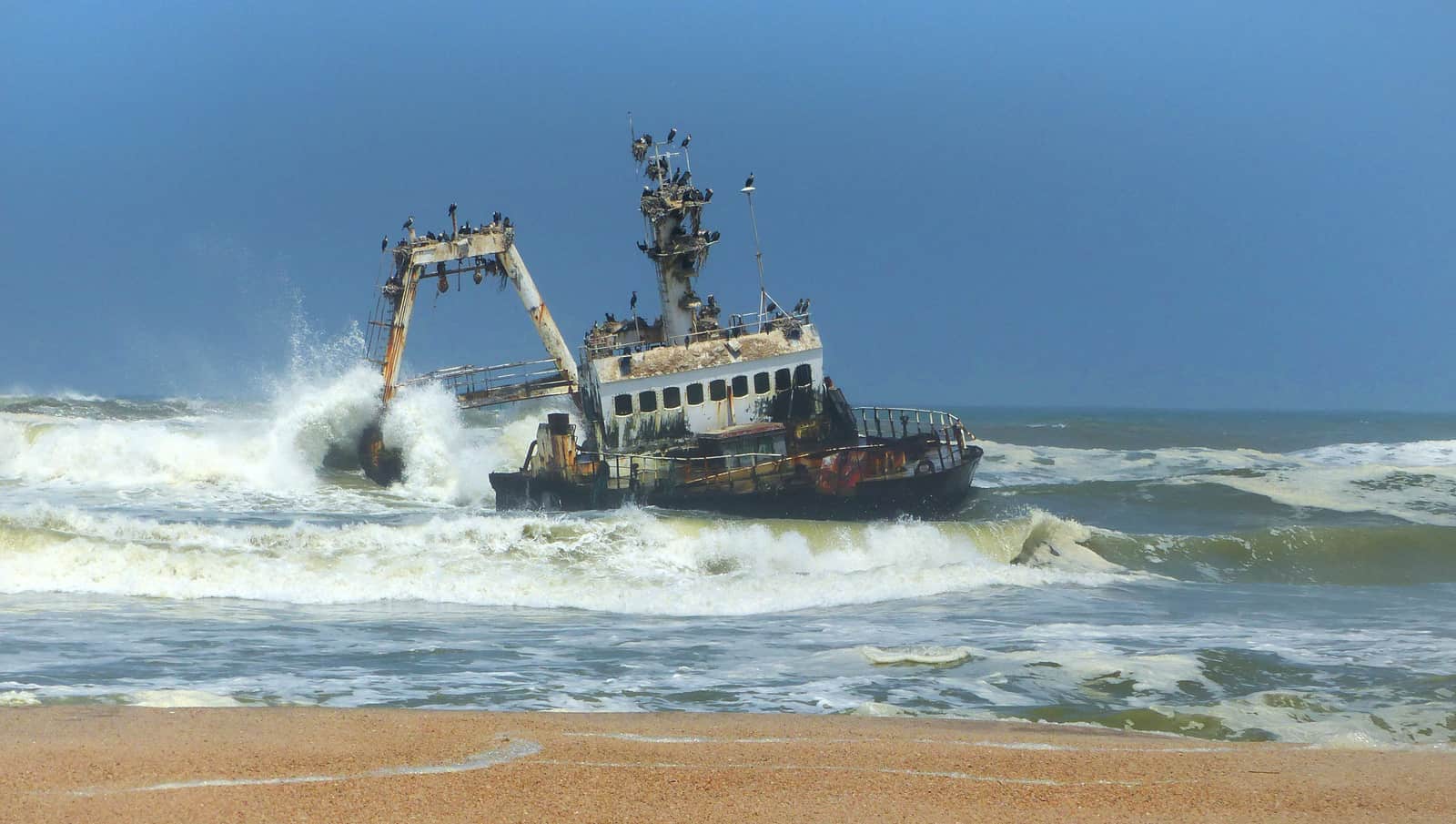
Cape Cross
Most scholars consider the Portuguese explorer Diogo Cão to be the first European to set foot in Namibia. When he landed on the coast in 1486, he erected a stone cross to mark the landing spot (and – unsuccessfully – claim the land for Portugal). The cross was later used by other sailors for navigation, and the cape got the name “Cape Cross”.
Today, Cape Cross hosts one of the largest seal populations in the world. More than 200,000 seals live on the coast. Visitors can view them from a 200m long wooden pathway. The seals quickly discovered that the pathway provides shelter from the sun, so you’ll literally walk across loud and barking seals. A unique experience! Also unique is, unfortunately, the smell of the seals. The stench is so intense that many a tourist has to stay in the car, and the clothes of the other visitors still stink for days even after just a 5-minute stop-over. I still find that the experience of so many seals at one place was worth it, although Svenja disagrees in that regard.
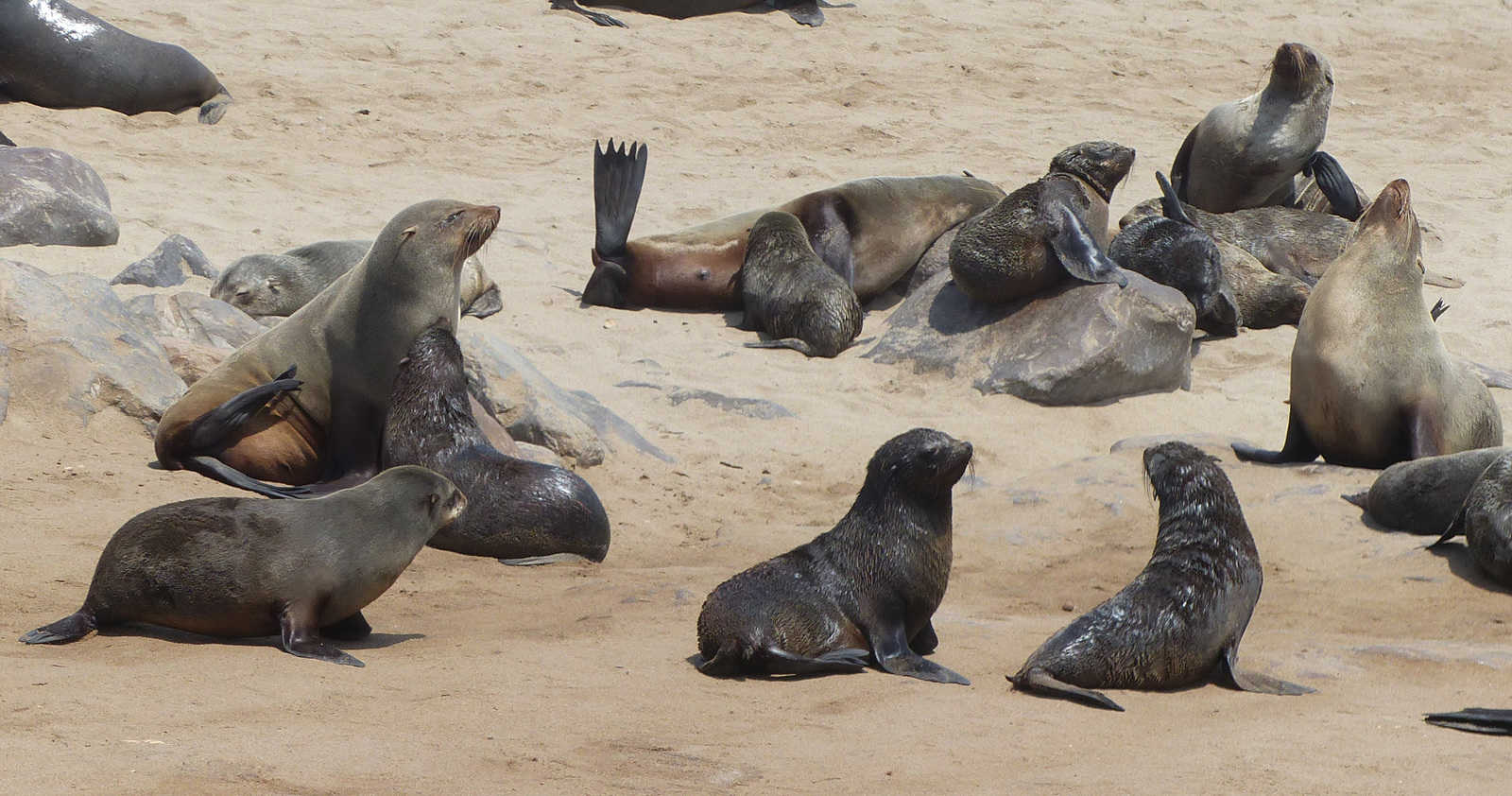
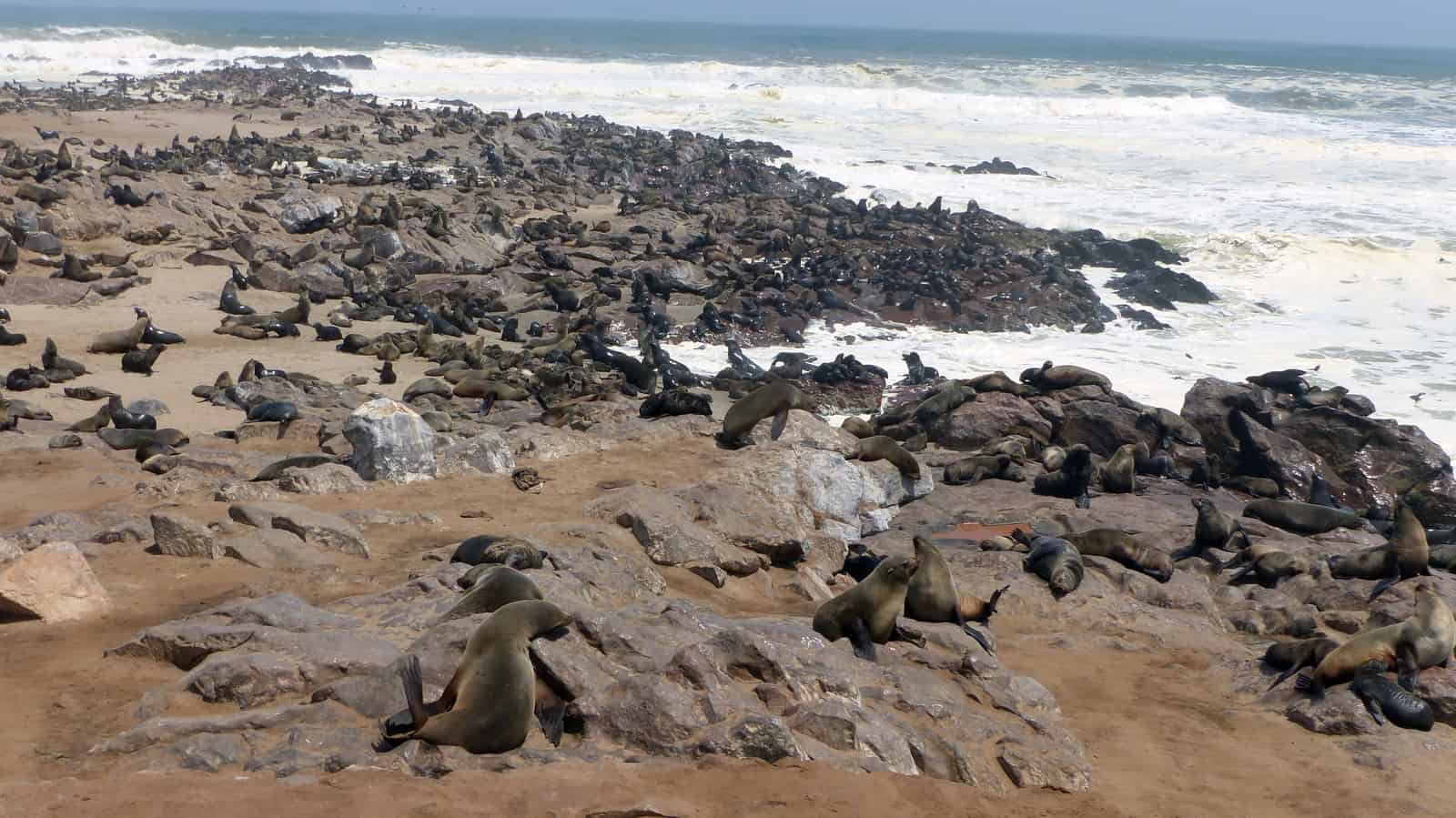
OUR TRAVEL ROUTE FOR THE ENTIRE TRIP
If you want to learn what else we experienced in Namibia, check out our travel route for the entire trip – including reviews of the most exciting places!
- Last Stop: Sossusvlei
- Next Stop: Spitzkoppe
- Overview: Our entire route

